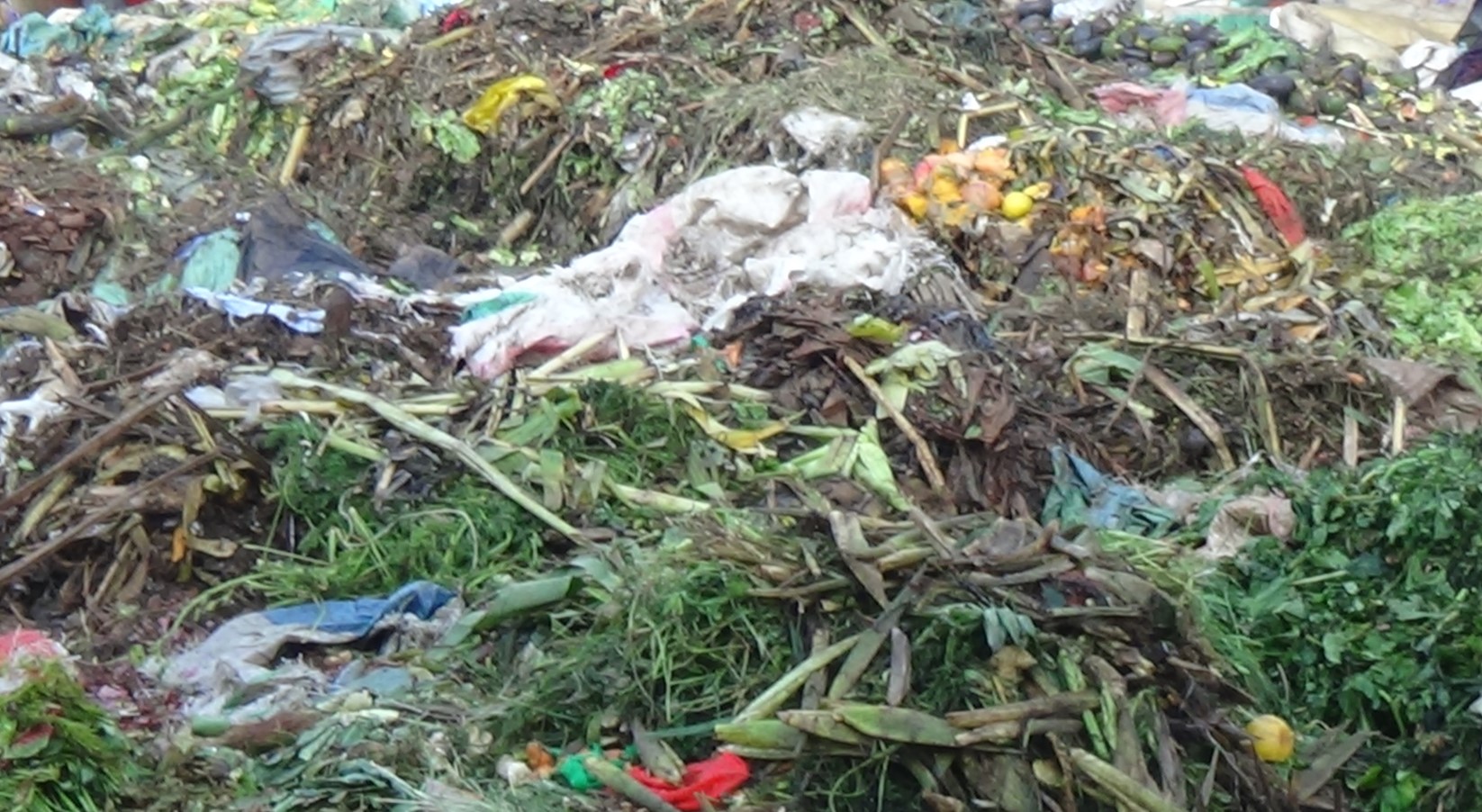Eastleigh traders battle food waste for lack of storage equipment

The FAO says that up to 40 per cent of Kenya's food is lost between farmers and consumers, exacerbating food insecurity.
A walk through the busy streets of Eastleigh, Nairobi, and sightings of discarded fruits and vegetables are evidence of the lack of proper storage facilities for perishable goods.
The resultant food waste and loss is heartbreaking and matters worsen during the rainy season as the higher moisture content in the air makes it harder for vendors to keep their produce fresh.
More To Read
- Kenya wastes Sh72 billion worth of food annually, leaving millions hungry - report
- Eastleigh traders accuse City Hall of inaction as unlicensed hawkers flood streets despite ban
- Eastleigh hawkers suffer losses as heavy rains halt trade for third straight day
- Eastleigh Business owners demand action against hawkers, taxi operators
- Hawkers evicted from Eastleigh's Yusuf Haji Avenue, clearing traffic and walkways
- Night market thrives on Eastleigh’s Kipanga Athumani Street as major malls close for the day
Paul Ngei, a 58-year-old vegetable vendor, says each day brings fresh hurdles, especially when it rains.
"As someone who has been selling vegetables for years, you'd think I'd seen it all, but the struggle to find proper storage for our goods never gets easier," he says, adding that they improvise but this is insufficient.
"Without proper structures, our livelihoods are at the mercy of the rain. We resort to makeshift structures to cover our precious produce and rely on the watchful eyes of guards to prevent their destruction at night."
Most of these vendors use wheelbarrows for their businesses, operating from a fixed roadside spot or moving from place to place, due to a lack of resources to set up robust structures. Their priority is putting food on the table.
"On some days it feels like we're battling nature itself just to make ends meet," he says, adding that heavy rains, especially at night, force everyone away from the streets, meaning their produce goes unguarded.
 Andrew Kasalu, a fruits vendor based in Eastleigh, Nairobi. (Photo: Charity Kilei)
Andrew Kasalu, a fruits vendor based in Eastleigh, Nairobi. (Photo: Charity Kilei)
Andrew Kasalu, a fruit vendor, says every rainy season brings a fresh "battle for survival," as their storage space is limited to wheelbarrows, which they cover with plastic sheets and other such materials when it rains.
He adds that at the end of each day, "anything leftover becomes a burden we can't bear," so they lower prices so the food sells fast to minimise losses since customers buy smaller quantities when the costs are high.
"We're at the mercy of the weather, and sometimes it feels like we're fighting a losing battle. Farmers struggle to bring enough fruits to the market yet we scramble to meet the demands of our loyal customers," he says.
He adds, "It's not just about making a profit; it's about putting food on the table for our families. We do our best but sometimes it feels like we're swimming against the current, trying to keep our heads above water in a sea of uncertainty."
Mary Wambui, another trader, adds that in a business area where the competition is stiff and customers always demand fresh produce, they have no choice but to throw away what they do not sell.
"During the rainy season, fewer customers visit the markets, intensifying the competition among farmers and traders. With supply exceeding demand, waste becomes inevitable," he says.
A spot check found a similar situation at the Wakulima Market near the town centre, where hundreds of vendors sell fruits and vegetables along Haile Selassie Avenue.
There, fruit and vegetable waste was found at sites including a central point for dumping waste, which the county government collects, but often late, sometimes after a week.
 Discarded vegetables at the Wakulima Market in Nairobi. (Photo: Charity Kilei)
Discarded vegetables at the Wakulima Market in Nairobi. (Photo: Charity Kilei)
According to a 2023 report of the Food and Agriculture Organization (FAO) of the United Nations (UN), it's estimated that about 735 million people globally are experiencing hunger or malnutrition yet a considerable amount of food is lost or wasted.
Loss and waste occur across the entire food supply chain, from production to consumption, encompassing handling, transportation, storage, and distribution.
Household practices alone contribute to nearly 570 million metric tonnes of food waste annually worldwide, according to data from the United Nations Environmental Programme (UNEP). On an individual level, the average person wastes approximately 74 kg of food each year, UNEP says.
The FAO, in its 2023 State of Food Security and Nutrition in the World report, says that up to 40 per cent of Kenya's food is lost between farmers and consumers, exacerbating food insecurity.
The report emphasises the urgent need to boost food production by around 60 per cent to meet the demands of a growing population, which is expected to surpass 9.5 billion people by 2050.
Kenya, along with its neighbouring countries in the Horn of Africa, faces severe drought conditions that threaten food production.
 Discarded fruits and vegetables are seen in a pile of waste at the Wakulima Market in Nairobi. (Photo: Charity Kilei)
Discarded fruits and vegetables are seen in a pile of waste at the Wakulima Market in Nairobi. (Photo: Charity Kilei)
FAO noted that Kenya struggles to achieve Sustainable Development Goal 2—zero hunger—with food insecurity and malnutrition affecting millions of its citizens daily. Roughly one in three Kenyans is considered food-poor, translating to 33 per cent of the population.
Forty per cent of food reaching consumers is discarded, while nearly 30 per cent of harvested crops in sub-Saharan Africa are wasted, posing dire consequences for food security, nutrition, the environment, and the livelihoods of small-scale farmers.
The 2030 Agenda for Sustainable Development highlights the pressing need to address food loss and waste during production and within supply chains. It emphasises the collective responsibility of individuals and entities to mitigate food loss and waste.
In Kenya, food loss and wastage contribute to an annual loss of Sh72 billion (£0.48 billion) due to inefficient consumption practices.
The Food Waste Index Report 2021 by UNEP and the Waste and Resources Action Programme (WRAP) reveals that every Kenyan discards an average of 99 kilogrammes of food annually, which translates to 5.2 tonnes of wasted food every year.
Top Stories Today















































